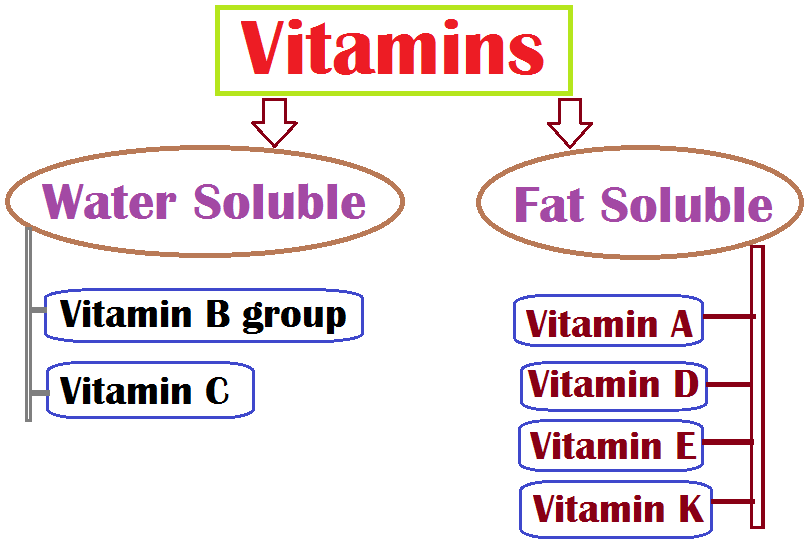Fruits and Vegetables-Important Sources of Nutrients and Vitamins
TEXARKANA, Ark. –
Most fruits and vegetables are naturally low in fat, low in calories, and are cholesterol free. It is when we take them from their natural state and add sugars, fats and sodium that they can become unhealthy. The good news is that fruits and vegetables are important sources of many nutrients including vitamins, fiber and phytochemicals. What are these and why do we need them?
By definition, vitamins are organic compounds needed in small quantities to sustain life. We get vitamins from food, because the human body either does not produce enough or none at all.
There are two types of vitamins, fat-soluble and water-soluble. Fat-soluble vitamins are stored in the fat tissues of our bodies, as well as the liver. These vitamins are easier to store than water-soluble ones, and can stay in the body as reserves for days, some of them for months. Examples would include Vitamins A, D, E and K.
Water-soluble vitamins do not get stored in the body for long; they soon get expelled through urine. Water-soluble vitamins need to be replaced more often than fat-soluble ones. Vitamins C and all the B vitamins are water-soluble.
Fruits and vegetables are rich in many nutrients such as potassium, folate and vitamins A and C. Diets rich in potassium may help maintain a healthy blood pressure. Potassium can be found in sweet potatoes, potatoes, greens, spinach, mushrooms, lima beans, peas, bananas, tomatoes, tomato juice and tomato sauce (look for low-sodium versions), oranges and orange juice, raisins, prunes and prune juice, dates, cantaloupe and honeydew melon.
Folate or folic acid helps the body form red blood cells. Folate is found naturally in a wide variety of foods, including vegetables, especially dark green leafy vegetables, fruits and fruit juices, nuts, beans, peas, dairy products, poultry and meat, eggs, seafood, and grains. Spinach, liver, yeast, asparagus, and Brussels sprouts are among the foods with the highest levels of folate.
Vitamin A keeps eyes and skin healthy and helps protect against infections. Vitamin A comes from leafy green vegetables, orange and yellow vegetables, tomato products, fruits, and some vegetable oils. The top food sources of vitamin A in the U.S. diet include dairy products, liver, fish, and fortified cereals.
Vitamin C is important for growth and the repair of all body tissues, helps heal cuts and wounds, and keeps teeth and gums healthy. Two little known fruits have the highest vitamin C contents of all foods. The Kakadu plum grows natively across the top end of Northern Australia and the camu camu fruit which grows in the Amazon Rainforest in the Republic of Peru. You can’t get these here in our area, but if you visit a larger town you may find them.
More common forms of vitamin c would be cantaloupe, citrus fruits and juices, kiwi fruit, mango, papaya, pineapple, strawberries, raspberries, blueberries, cranberries and watermelon. In vegetables consume broccoli, Brussels sprouts, cauliflower, green and red peppers, spinach, cabbage, turnip greens, and other leafy greens, sweet and white potatoes, tomatoes and tomato juice and winter squash.
All fruits and vegetables are good sources of dietary fiber. Dietary fiber helps reduce blood cholesterol levels and may lower your risk of heart disease. Fiber is important for proper bowel function. Foods containing fiber help you feel full longer with fewer calories. Some of the best fruit and vegetable sources are: apples, oranges, berries, prunes, pears, green peas, and artichokes.
Phytochemicals are plant chemical compounds that have many potential health-promoting properties. Different fruits and vegetables have different phytochemicals that provide a variety of benefits. While different colors of fruits and vegetables contain different phytochemicals. The best way to make sure you are getting the maximum benefit from all phytochemicals is to eat a rainbow of colors.
Fruits and vegetables are a powerhouse of good nutrition, and provide many of the nutrients we need to maintain a healthy diet. Vegetables are still available at the Gateway Farmers Market. Look for different squash, turnip greens, kale, and other cool season vegetables. If you are early, enough you still be able to find red tomatoes.
For more information, contact the Miller County Extension Office, 870-779-3609 or visit us in room 215 at the Miller County Courthouse. We are online at cdue@uada.edu, on Facebook at UAEXMillerCountyFCS/CarlaDue, on Twitter @MillerCountyFCS or on the web at uaex.uada.edu/Miller.
By Carla Due
County Extension Agent - FCS
The Cooperative Extension Service
U of A System Division of Agriculture
Media Contact: Carla Due
County Extension Agent - FCS
U of A Division of Agriculture
Cooperative Extension Service
400 Laurel Street, Suite 215 Texarkana AR 71854
(870) 779-3609
cdue@uada.edu
The Arkansas Cooperative Extension Service is an equal opportunity institution. If
you require a reasonable accommodation to participate or need materials in another
format, please contact your County Extension office (or other appropriate office)
as soon as possible. Dial 711 for Arkansas Relay.
Pursuant to 7 CFR § 15.3, the University of Arkansas System Division of Agriculture
offers all its Extension and Research programs and services (including employment)
without regard to race, color, sex, national origin, religion, age, disability, marital
or veteran status, genetic information, sexual preference, pregnancy or any other
legally protected status, and is an equal opportunity institution.
